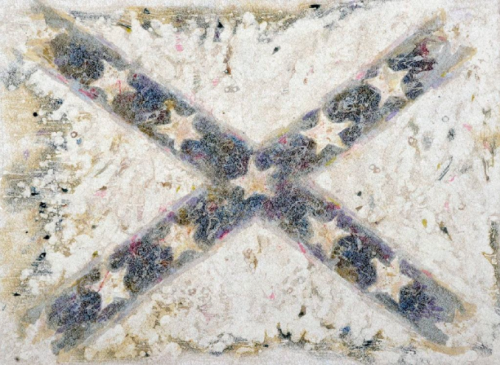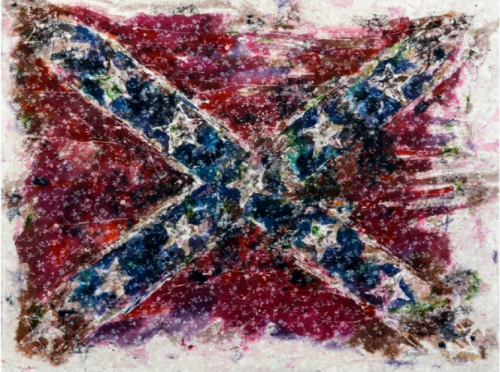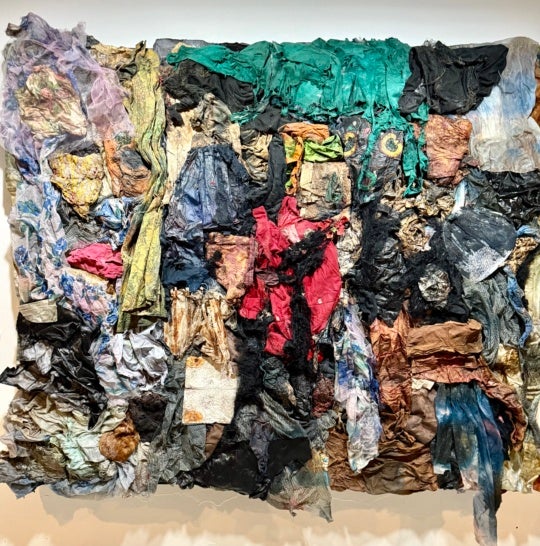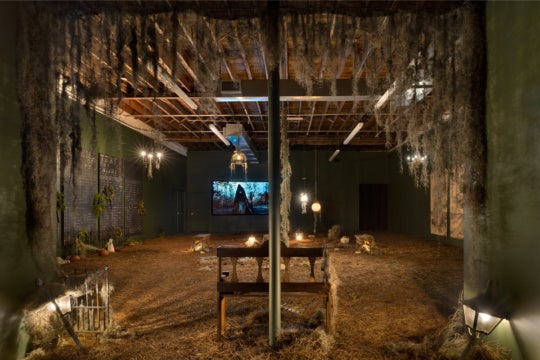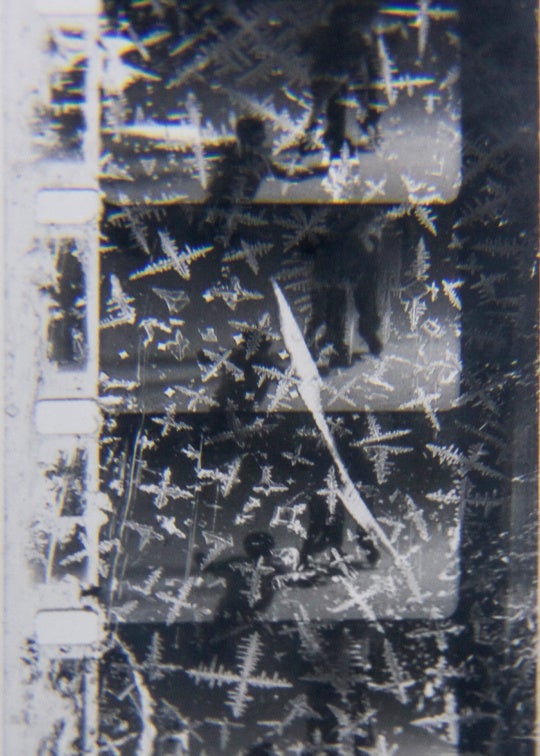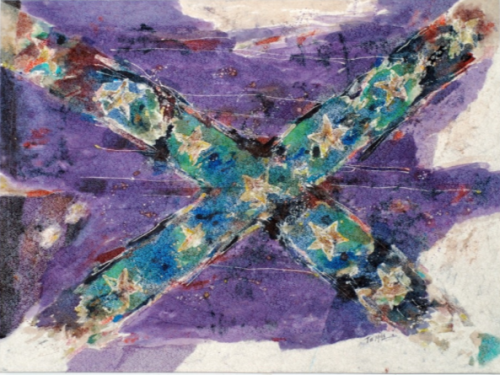 This essay is presented in partnership with Temporary Art Review, a platform for contemporary art criticism that focuses on alternative spaces and critical exchange among disparate art communities.
This essay is presented in partnership with Temporary Art Review, a platform for contemporary art criticism that focuses on alternative spaces and critical exchange among disparate art communities.
The museum and gallery space devoted to a dual-venue exhibition act as a supporting cast to the dichotomies present in Leo Twigg’s: Last Flags and Towards Last Flags exhibitions, now on view at the Greenville County Museum of Art and Hampton III Gallery in Taylors, SC, respectively. The two exhibitions, curated by Chesnee C.S. Klein at GCMA and Sandra Rupp at Hampton III, feature a number of works created over a 40-year period utilizing the batik process and the motif of the Confederate flag, a central theme of the artist’s work. Although the exhibitions are concurrent (the Hampton exhibition closes Nov. 8th, the GCMA closes on the 16th), each features its own distinctive portrayal of the artist’s process and imagery, making each exhibition space feel self contained and serving as a powerful reminder of the legacy of images we inherit.
Much acclaim has recently come to the South Carolinia artist, Leo Twiggs, who uses the labor intensive batik process, a technique of manual wax-resist dyeing that is applied to fabric. Twiggs, the first African-American student to receive a doctorate of arts from the University of Georgia, has had more than 75 solo exhibitions, including those at the Studio Museum in Harlem and the American Craft Museum. Twiggs has infused batiking with a painter’s sensibility, evoking improvisations of color, gesture, and new meaning into a process usually associated with functional or folk traditions. Surveying the multiple works between the two exhibitions – which in many ways function as a thematic retrospective – there is a dichotomy between works that are tighter and controlled to looser, gesturally driven examples.
The unifying factor between these approaches and across both exhibitions is the form of the Confederate flag. Given this volume of production, however, the paintings on view at GCMA and Hampton III represent constant experimentation, refinement, and a variety of approaches to the batik process. Works such as Flag, 2006, disrupt the figure-ground relationship inherit in a graphic motif; the flag appears as a gouge and contrast to the ground of the fabric, oddly reminiscent of Maya Lin’s Vietnam memorial cutting into the Earth. In others, such as Last Flag #4, 2014, the imagery appears to hover above the fabric, vying with the color of the resist and the pattern for primary importance, as if the artist put these elements into competition with one another. In other works, the characteristic “X” of the bars become something else altogether, a barricade, or backdrops of some unknown space occupied by figures or a cow. It is worth mentioning that Twiggs, in a video commentary accompanying the Hampton III exhibition, sees many of the flags functioning as railroad crossing signs, symbolizing events that must be crossed in life. Here, as Twiggs invokes the last stanza of Alfred Lord Tennyson’s “Crossing the Bar”, the act of traversing into places unknown, with moments of certainty and uncertainty, is realized:
For tho’ from out our bourne of Time and Place
The flood may bear me far,
I hope to see my Pilot face to face,
When I have crost the bar.
To any Southerner, the “flag issue” is one that continues to be at the forefront of discussions surrounding its legacy and future. This should be particularly evident for viewers in South Carolina, as evidenced by recent headlines in the state. If viewers choose to read Twiggs’s Flags as only reactionary, this is to dismiss the importance of his constant use of the image. Over forty years, the flag is a signifier that Twiggs has co-opted time and again, returning to it as an armature for formal investigation. Standing before the works at both venues, I couldn’t help but realize the importance of color; the uniformly vivid colors we associate with flags are drained of their usual connotations here, feeling more like tattered memories, a museum artifact, or a faded relic. Twiggs seems intent on finding something of interest in revisiting this subject again and again. Perhaps this preoccupation with color and the flag is attributable to the colorful patterns cherished by his mother and grandmother and to his desire to overwhelm an oppressive icon with a creative force.
As Twiggs himself states, “the Confederate flag is an icon that Whites in the South love to remember, and most Blacks would like to forget; yet, within the dichotomy of these two views is the passion within us all to remember the past and to hold on to some special moment of triumph.” When considering the breadth of technical experimentation and decades of work represented between these two exhibitions, we would be remiss not to acknowledge these triumphs both in subject and form, and the power of imagery in our lives to both divide and unite. These are the reminders of lessons we can be certain of.
“Leo Twiggs: Last Flags” was on view at Greenville County Museum of Art in Greenville, South Carolina, Sept. 13, 2014 – Nov. 16, 2014. “Leo Twiggs: Toward Last Flags” appeared at Hampton III Gallery in Taylors, South Carolina, Sept. 25, 2014 – Nov. 8, 2014.

